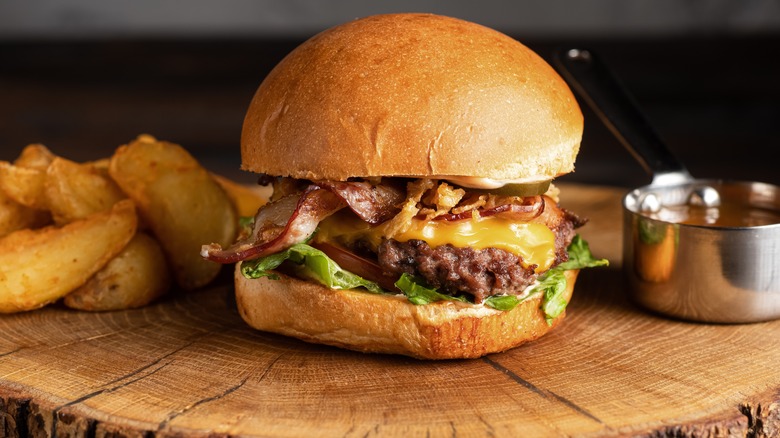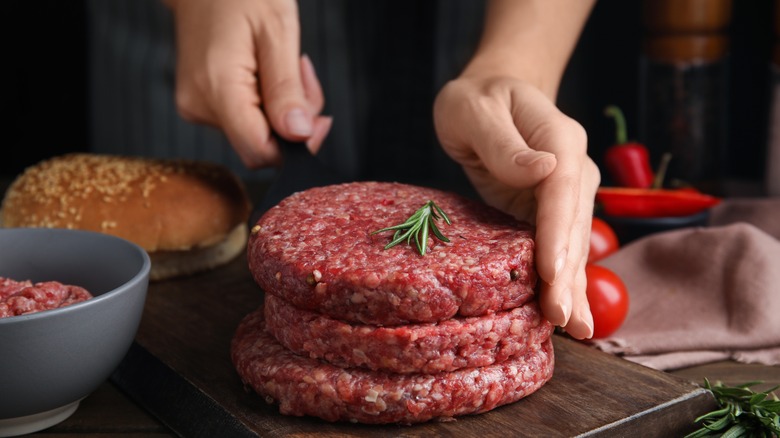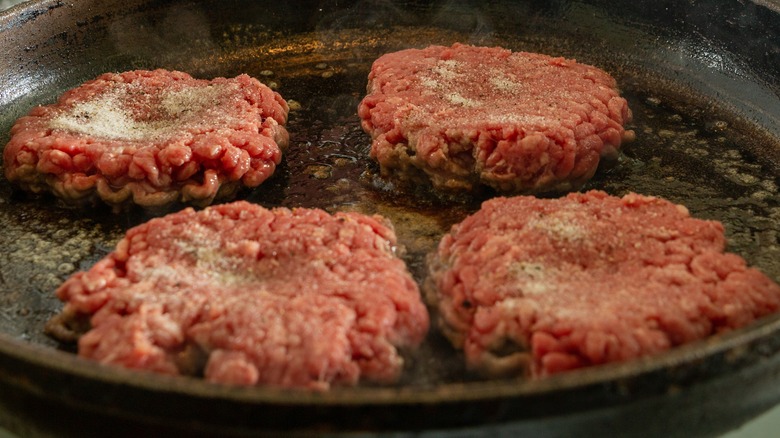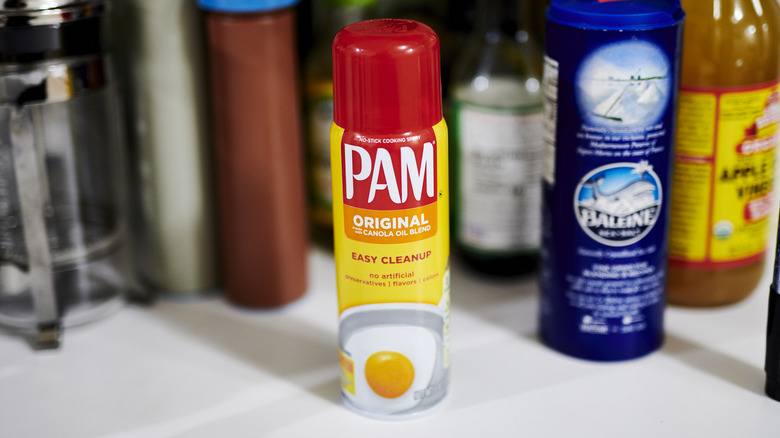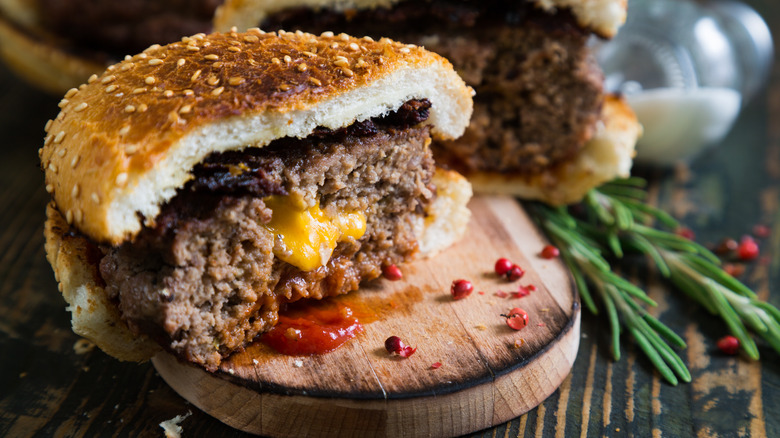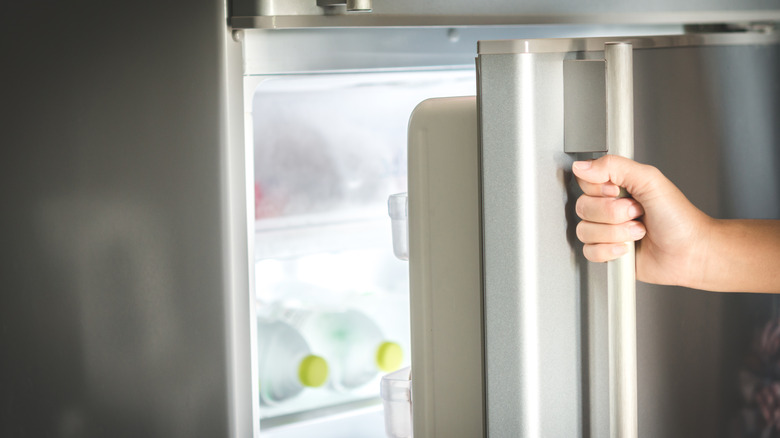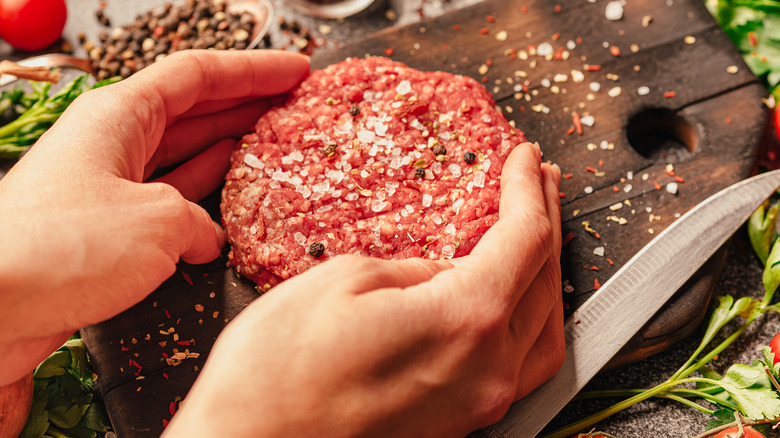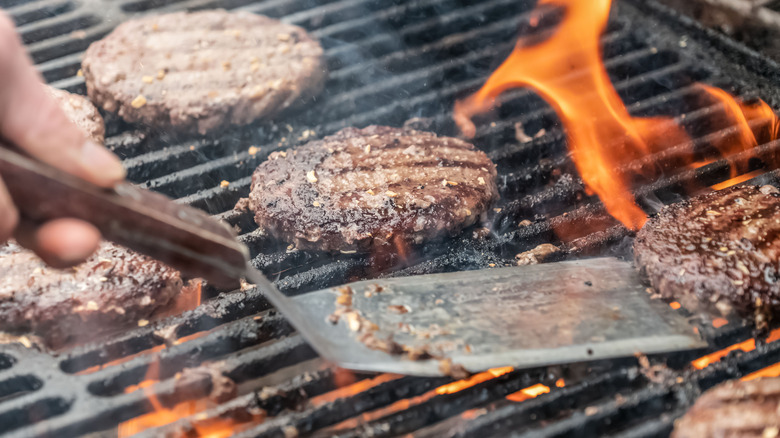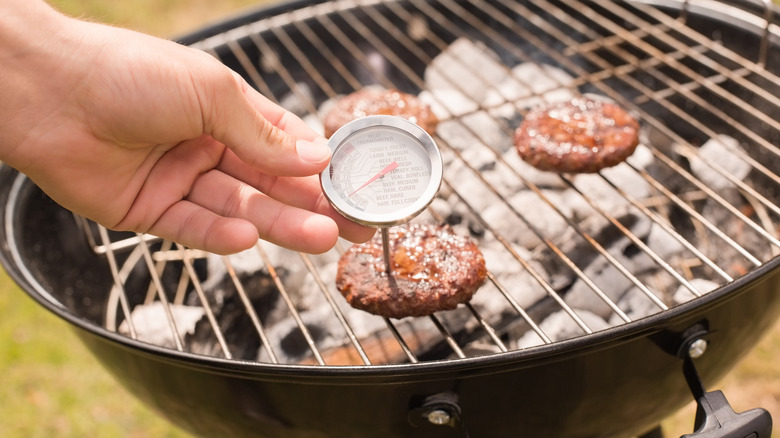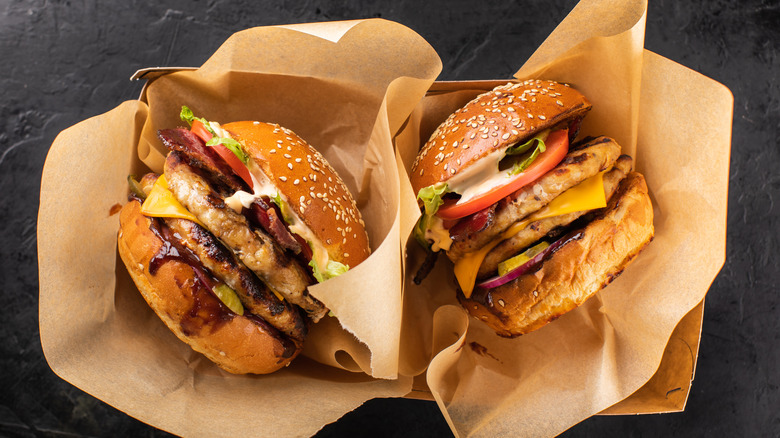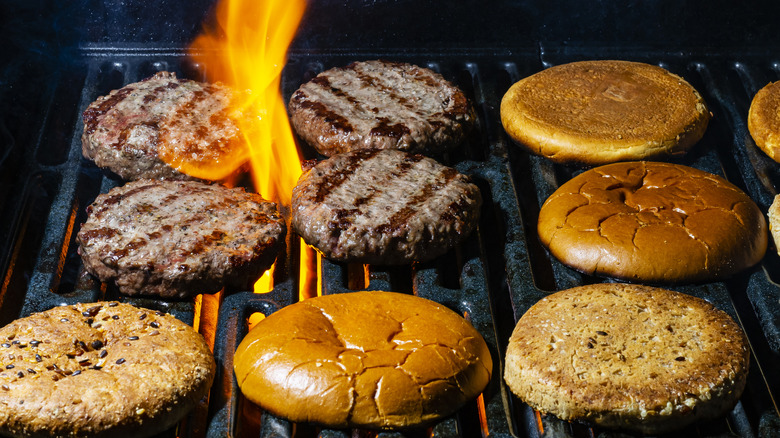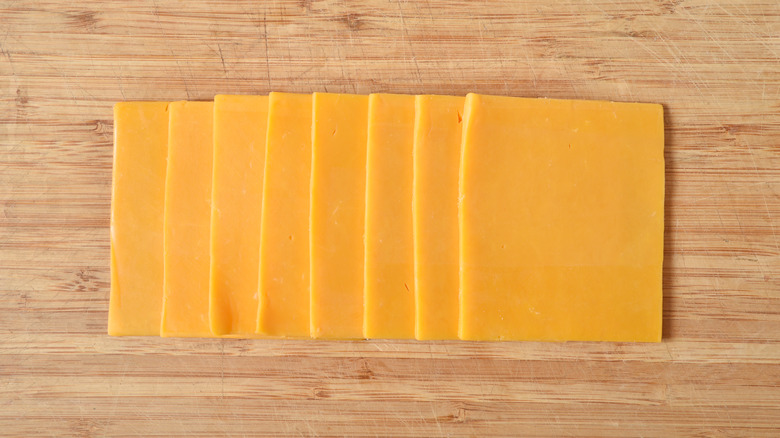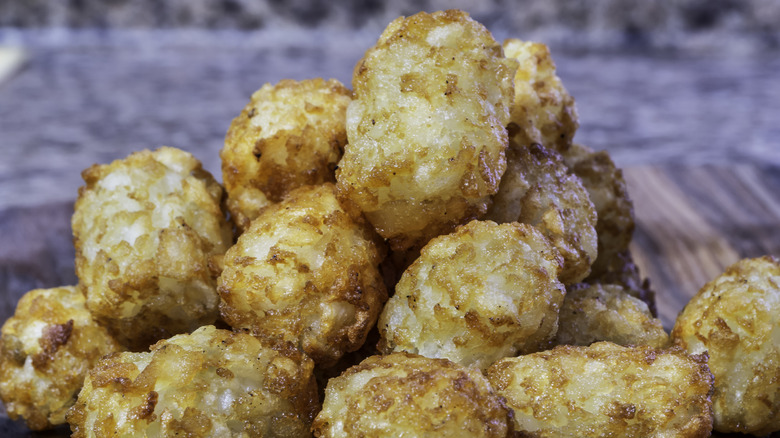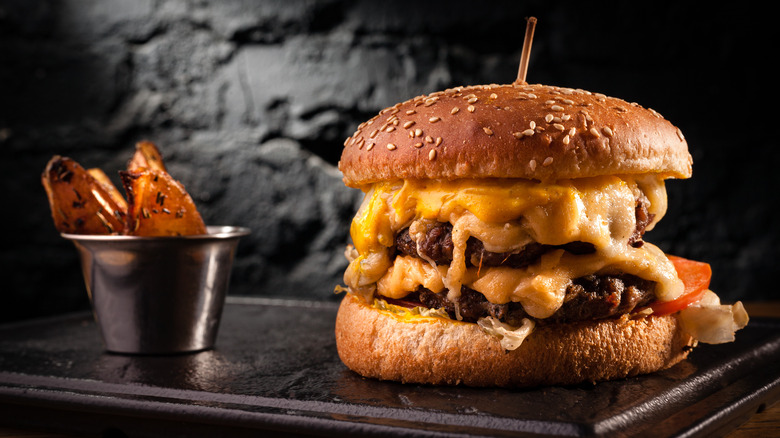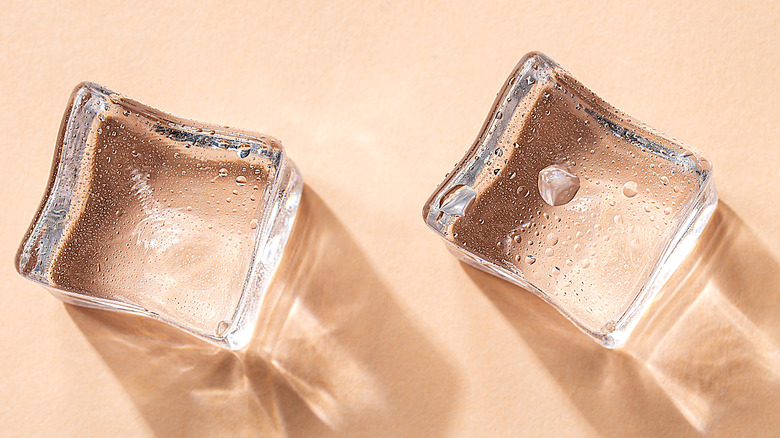14 Hacks That Will Transform The Way You Cook Burgers
There's a case to be made that, on some level, we're all in pursuit of the perfect burger. In the United States, burgers are everywhere you look, from ball games to neighborhood barbecues, and in restaurants on every corner. According to YouGovAmerica, hamburgers are enjoyed by a staggering 83% of Americans, making it the third most popular dish nationwide.
However, our beloved burgers are often limp, disappointing, overly fatty, or dry. And the worst thing is, sometimes they turn out that way despite the chef doing everything they think they need to. But as with many simple food items, burgers take a certain amount of skill to nail. And often, the difference between a good burger and a bad one is in a simple trick or technique. There are a wealth of hacks out there that can level up your burgers, including some that some of the most well-known chefs in the world use regularly. And it's time that those hacks were shared with the world. Let's take a look at some frankly ingenious tricks that will revolutionize your burger game.
1. Portion out your burgers with a simple freezer trick
The perfect burger starts with the perfect portion of meat. Too often, an incredibly-seasoned burger will taste good, but there just isn't enough to be satisfying. Or, you're handed a burger that's just too large and unwieldy to enjoy. But how do you make sure that your burgers are perfectly-sized, and that you're not wasting any meat?
All you need to do is pre-portion your frozen burger patties. Take your prepared meat and seasonings, and then place them in a resealable freezer bag. Then, flatten the mixture down, using your hands, so that your burger meat is in a sheet shape. Close the bag up, ensuring that no air is left in it, to prevent degrading the meat and causing freezer burn. Then, take a long, dull object, like a ruler or a chopstick to divide the burger meat with evenly spaced crisscrossing lines across the bag. This will create a grid shape of patties with nearly identical proportions. Then, place it in the freezer until you're ready to use it. Not only does this allow you not to have to fiddle with raw meat, but you can easily separate the preportioned meat when it's cooking time.
2. When shaping your burgers, add a dimple
What sets the burger apart from other sandwiches is not only its topping game but its patty shape. A flawlessly rounded pillow of meat, nestling inside a seeded bun, is a sight that's about as iconic as they get. But achieving a faultless burger shape can be harder than you think. And too often, when your burger hits the grill, it can morph and contract from the heat, changing shape in front of your eyes.
So, how do you prevent this? It's as simple as a dimple. To form the best burger patties, all you have to do is press your thumb gently into the middle of each disk before cooking. This Bobby Flay-approved trick prevents your burgers from becoming more spherical than you'd like. When your burger comes into contact with the grill, its outer edges pull in and contract. This can push the burger into a more round shape, leaving you with a ball of meat in between your buns. Pressing a dimple into it, though, increases resistance to the contracting sides. As a result, your burgers, when finished, are that perfect hockey-puck shape, ready to receive your cheese and chosen sauces.
3. A little cooking oil goes a long way to shaping your burgers
Shaping burgers can be a fun activity, but there's no denying it's also a little gross. Handling all that raw meat, and then having to pull scraps of beef off your fingers and from under your nails? Yuck! With this cooking spray hack for your patties, though, you'll never be picking flecks of meat off your hands again.
Before you start grabbing your burger meat, spritz some cooking spray over your hands. This spray will create a barrier of oil between your skin and the meat, meaning that when you come to shape your burgers, you won't have meat clinging to your palms. It also means that your burgers will be better shaped, as you won't be contending with the tacky surface of the meat as much. Each of your patties will turn out smooth, round, and lightly coated with oil to help them cook. If you don't have any cooking spray, a light coating of regular cooking oil on your hands will do the trick, too. Don't forget to thoroughly wash your hands and disinfect any work surfaces after handling the raw beef.
4. For stuffed burgers, grab a beer
Name a more instinctive combination than burgers and beer. Easier said than done, isn't it? The meaty meal and alcoholic beverage are a match made in heaven. And as it turns out, your beer has more use when it comes to burgers than just helping wash them down.
The only thing that's better than a burger is a stuffed burger, and this burger-making hack makes them a cinch to create. All you have to do is take your ball of burger meat, but instead of making it into a patty, leave it rounded. From there, grab a full can of beer, and push it into the sphere of meat. The burger will form a natural patty shape with an indentation in it, around the bottom of the can. Remove the can, and then place whatever you'd like to stuff your burger with into the indentation. Once your chosen stuffing is safely in the groove, gently form the edges of the patty around it, making sure it's completely sealed. Then, whack it on the grill, and cook to your heart's content.
5. Cook them directly from the fridge
When it comes to meat, cooking it when it's still cold is one of the biggest no-nos out there. So what if we told you that, when it comes to burgers, the opposite may be true? For a perfectly medium-rare, juicy center, keep your burgers in the fridge until you cook them.
Although well-cooked beef can help to lower the risk of foodborne illness, it can also leave us with tough, mealy burger patties. This burger patty trick slows down the cooking process and means that while the outside meat gets a lovely sear, the inside just warms a little. The result is a slightly pinkish center and a satisfyingly charred crust. Bear in mind, though, that this hack only works if you're making normal-sized burgers. For particularly large patties, you'll likely want to allow your meat to come up to room temperature slightly. Additionally, this trick should only be employed if you're confident that your meat is fresh and sanitary. If you feel that there's any chance it could be past its prime, it's far safer to cook your patties thoroughly.
6. Ensure you're checking your seasonings
Seasoning raw meat mixtures can be one of the hardest things to nail. After all, you probably don't want to try a bit of the raw meat straight out of the mixing bowl. As a result, many people simply hope for the best and end up either under-seasoning or over-seasoning their burgers. And whether you're left reaching for a glass of water to wash down the salt, or simply underwhelmed, it's never a pleasant experience.
But with this tiny patty hack from Rachael Ray, you'll never get your sandwiches wrong again. Once you've finished seasoning your burger meat, let it rest briefly, to allow the flavors to come together. Then, take a small piece of meat, and form it into a mini patty, about the same size as a quarter. Heat a pan on the stove, and put the burger in, cooking it until it's fully browned — then give it a taste. If your seasoning blend is on-point, you can safely proceed with the cooking of the rest of your normal-sized patties. If you need a little boost of something, however, you can add a little more seasoning. Then, make another small patty if you wish, to test it again.
7. To perfect your burgers, don't keep flipping
Food should always be a little bit fun to make. And in the case of burgers, much of that fun comes from the all-important flip. But whether you're spinning your burgers high into the air or prefer a quick overturn to close to the grill, make sure you only flip your burgers once. Flipping burgers a single time is one trick that restaurant chefs employ to keep their patties juicy.
Every time you flip a burger, you cause the moisture in it to seep out. As you might expect, then, the more times you flip a patty, the more chance it has of getting dry and tough. Additionally, flipping your burgers repeatedly means they have less sustained contact time with the grill or skillet. As a result, it will be harder to achieve that distinct and satisfying charred texture of a well-cooked burger.
But when is the right time to flip? Ideally, your burger should be cooked roughly three-quarters through. That way, you know that when you flip it, all it needs to do is cook lightly on the other side. And once you flip it, make sure that you're leaving it alone, so it has a chance to brown up nicely.
8. A meat thermometer is your best friend
When cooking meat, there's a certain amount of guesswork involved around whether it's done or not. After all, you don't want to cut into that succulent burger patty and ruin its perfectly cylindrical shape. So how do you know whether it's fully cooked through?
That's where a meat thermometer comes in. For a restaurant-quality burger, insert an instant-read meat thermometer into its thickest part. Once it reaches your desired temperature for doneness, pull it off the grill. As you might expect, the warmer the interior temperature is, the more cooked through the burger will be. For a fully-cooked piece of meat, your thermometer should read 160 degrees Fahrenheit. At the bottom end of the scale, a rare burger will be approximately 120 degrees Fahrenheit on the inside. And remember, if in doubt or your thermometer isn't working, the best thing to do is to leave it on the grill a little bit longer. The last thing you want is a completely raw, cold inside of your burger.
9. Greek yogurt can elevate your chicken burgers
Chicken burgers are an excellent and light alternative to beef, pork, or lamb patties. But there's no escaping the fact that, when you're working with light meat, things can get a little dry. As white meat contains less fat than its red counterpart, and chicken breast can contain little fat at all, it can be a struggle to get moisture into it. But if you want to change your chicken burgers forever, you only need one thing — Greek yogurt.
Mixing Greek yogurt in with your ground chicken blend will add crucial moisture and fat to your burgers. When they cook, your burgers will therefore be less likely to dry out, and stay juicy right up until you serve them. Greek yogurt can also amp up your burgers' protein levels, and provide some excellent beneficial bacteria for your gut. For each pound of ground chicken you use, dollop in 5 to 6 tablespoons of Greek yogurt. Most importantly, don't be tempted to use a lower-fat Greek yogurt here. It's the fats in full-fat Greek yogurt that give chicken burgers their moistness.
10. Get your buns on the grill
The only way you can achieve an impressive burger experience is if every component is seriously good. And this includes the all-important burger bun. While a soft bun is a great counterpart to the more solid burger, it can also tend to fall apart. That's why you should always toast your buns, as Gordon Ramsay does with his burgers. Toasting your buns gives them a little extra robustness, and stops them from getting soggy and breaking. You also get a satisfying smokey flavor that makes your burgers all the more delicious.
Be careful about which kind of bun you're toasting, however. Although brioche buns are all the rage, they're one of the worst types of bread you can use. The reason for this is that brioche buns, put simply, are fragile things — and burgers aren't delicate. This means they're far more likely to deteriorate and fall apart once you've piled them high with toppings. Spare yourself the disappointment, and opt for a bun that's more structurally sound. A classic sesame seed bun will do the trick, and toasts up beautifully, as will potato buns, Texas toast, or sourdough rolls.
11. Flip where you put your cheese
Is there a more American image than a burger with cheese dripping down its sides? We don't think so. However, for the lovers of classic visuals out there, we have some disappointing news. As it turns out, putting cheese on top of your burger, and allowing it to melt down, may not be the best way to do it. This subtle cheeseburger hack, pioneered by Food Network favorite Sunny Anderson, may just change the way you think about burgers forever. Instead of placing cheese on top of the patty, Anderson shared a photo on Instagram of a burger where the cheese was surprisingly on the bottom bun.
While this may sound like sacrilege, there's some serious logic to it. By placing your slice of cheese on the bottom bun, it prevents the burger juices from dripping into the lower piece of bread. As a result, your bun doesn't fall apart in your hands. Additionally, the cheese is still able to melt, thanks to the heat of the burger warming it through. And as a bonus, it also makes more space for additional toppings on the upper side of your burger. Convinced yet?
12. For tater tot burgers, get smashing
A tater tot-topped burger is pretty next-level. Honestly, whoever thought of the combination of meaty, tender burger meat, and crispy shredded potatoes was a genius. Unfortunately, though, there is an inherent problem with tater tots on burgers, which is the snack food's shape. If you throw your tots directly onto the burger, you're left with some pretty big lumps of potato on the meat. And, when you put your burger bun on top, this can make things tower sky-high.
So, to make your tater tot-topped burgers even better, it's time to flatten things out. Take your tots, and press them flat, using a cooking utensil or the underside of a glass. You can either do this once they're cooked or before cooking. If you opt for the latter, you end up cooking them with a greater surface area, giving you more crispy goodness. And then, you can simply slide them on top of your burger, sneaking a bit of crunch into every bite, without causing things to get too vertical.
13. For perfect melted cheese, grab a bowl
Have you ever wondered why restaurant burgers taste better than yours? It's all down to the tricks of the trade, folks. Restaurant chefs have a range of hacks for their burgers that they're just not telling you, which amp up the flavor and keep you coming back for more.
And one of them is pretty simple to master yourself — how to melt your cheese properly. Restaurant-style burgers come with the cheese fully melted, enveloping the patty. However, when you make them at home, that cheese can stay solid, no matter how hot the burger is. So what's the secret? All you need to do is grab yourself a metal bowl. Make sure it's small enough to fit in a skillet but big enough to go over a burger. When your burger's pretty much done, place your cheese on top, and then put the bowl over it. Then, lift it slightly, and squirt a tiny bit of water underneath, using a water bottle or turkey baster. Replace the bowl, and allow the steam from the water to do its magic, melting the cheese. Let this all go to work for a minute or so, remove the bowl, and then your burger is ready for service.
14. To keep your burgers moist, you need an ice cube
Biting into a dry, tasteless burger is a disappointing dining experience. But retaining moisture in a burger patty can be surprisingly difficult. And it's not just about having the right balance of fat to protein. It's also about making sure your cooking process doesn't sap vital water content and juice from the meat, making it unappetizing.
That's why this ice cube hack is one of our absolute favorites for ludicrously juicy burgers. All you have to do is insert an ice cube into your burger meat, shaping the patty around it. Then, when you come to cook it, the ice will melt, administering moisture through the meat. Pretty neat, huh? And, as ice cubes are nothing but water, this hack doesn't affect the taste of your burger in any way.
Just remember, though, that with this hack, you'll likely want to use ice cubes that are on the smaller side. That way, your meat can wrap around them fully, and you won't be left with lumpy burgers. Make sure, too, that you're only using the ice cube hack if you want your burgers cooked through, as cooking them rare may not give you enough heat to melt the ice.
